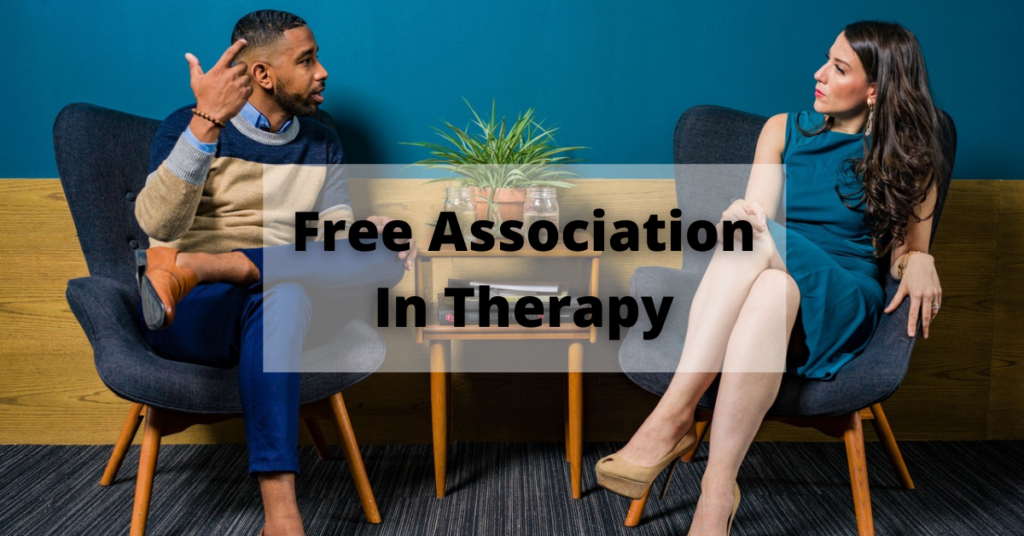Have you ever heard of free association in therapy? It is an important therapeutic technique that can help people explore their thoughts and feelings. In this blog post, we will discuss how this type of therapy works and some advantages it has over other types of therapy.
Contents
What Is Free Association in Therapy?
 Free association in therapy is a technique used by therapists. This is to help their clients explore their thoughts and feelings. This approach involves asking the client to say whatever comes to mind. It is without censoring themselves.
Free association in therapy is a technique used by therapists. This is to help their clients explore their thoughts and feelings. This approach involves asking the client to say whatever comes to mind. It is without censoring themselves.
This approach is one of the main techniques used in psychoanalysis, a type of therapy for individuals with mental illnesses.
The purpose of free association is to help clients gain insight into themselves and their problems while gaining comfort at sharing whatever comes up during sessions. It also may be helpful if you are being treated by someone who practices cognitive-behavioral therapy (CBT). One CBT technique involves identifying thoughts that lead to negative feelings or behaviors. This is so they can be replaced with healthier ones. The free association could give your therapist an idea of what types of thought patterns might need addressing.
Working of Free Association
The free association works best when it takes place within the context of a trusting relationship between client and therapist. Your therapist should make clear from the beginning how this exercise works, and what is and isn’t acceptable to share.
The therapist will usually start by asking the client a question, which can be anything from “What’s been on your mind lately?” to “What are you feeling right now?” The client then responds with whatever comes to mind, without censoring themselves. This process continues until the therapist or client decides to move on to another topic.
Sometimes it may be difficult for clients to know where to start when free-associating, so they might need some prompts from their therapist. If you find yourself stuck, simply say “I don’t know” or offer a brief summary of what you’ve been thinking about recently.
It’s also important to keep in mind that there is no wrong answer to a therapist’s question. If you feel embarrassed or ashamed about what comes to mind, try not to worry too much because your therapist is there to support and comfort you through the process.
Free Association in Different Therapies
There are many different types of therapy, and each works a little differently. Some therapies encourage clients to free-associate as part of the process; others may not use this technique at all.
Psychoanalytic Therapy
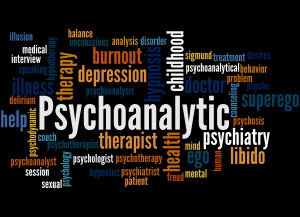 Since psychoanalysis is one of the first branches of psychology, it was founded on Freud’s idea that unconscious thoughts drive our actions (which he called “Freudian slips”). He believed these thoughts could be brought up during sessions through free association.
Since psychoanalysis is one of the first branches of psychology, it was founded on Freud’s idea that unconscious thoughts drive our actions (which he called “Freudian slips”). He believed these thoughts could be brought up during sessions through free association.
Cognitive Behavioral Therapy (CBT)
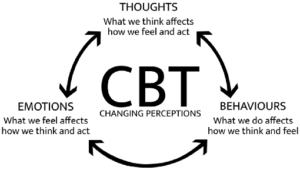 CBT focuses less on exploring subconscious thoughts than psychoanalysis does. However, therapists who practice CBT often ask their clients to identify negative thought patterns in order to replace them with healthier ones. Free association can help your therapist figure out what kinds of patterns you may need to address.
CBT focuses less on exploring subconscious thoughts than psychoanalysis does. However, therapists who practice CBT often ask their clients to identify negative thought patterns in order to replace them with healthier ones. Free association can help your therapist figure out what kinds of patterns you may need to address.
Psychodynamic Therapy
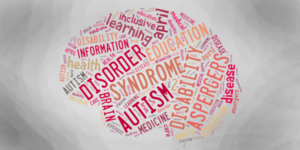 A type of therapy that is closely related to psychoanalysis, psychodynamic therapists ask their clients to free-associate in order to help them get in touch with the underlying thoughts and feelings behind certain behaviors or symptoms. Free association can also be used as a tool for dream analysis during this form of treatment. In this case, the therapist might ask questions about some of the more memorable images or scenes from a dream.
A type of therapy that is closely related to psychoanalysis, psychodynamic therapists ask their clients to free-associate in order to help them get in touch with the underlying thoughts and feelings behind certain behaviors or symptoms. Free association can also be used as a tool for dream analysis during this form of treatment. In this case, the therapist might ask questions about some of the more memorable images or scenes from a dream.
Emotion-Focused Therapy
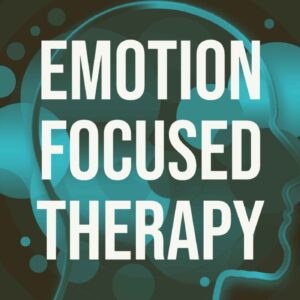 This type of therapy focuses on helping clients understand and process their emotions so they can be expressed in healthy ways. A common exercise used during emotion-focused therapies is called “emotional storytelling.” The client describes an emotional experience while focusing on how it felt rather than what happened (i.e., free association). This helps them gain insight into themselves and develop healthier coping strategies for dealing with similar situations in the future.
This type of therapy focuses on helping clients understand and process their emotions so they can be expressed in healthy ways. A common exercise used during emotion-focused therapies is called “emotional storytelling.” The client describes an emotional experience while focusing on how it felt rather than what happened (i.e., free association). This helps them gain insight into themselves and develop healthier coping strategies for dealing with similar situations in the future.
Existential Therapy
 This form of treatment focuses less on symptoms and diagnosis than other types of therapy do, which means that your therapist may not use association very often because there isn’t always a clear answer to the question “What’s wrong with you?”
This form of treatment focuses less on symptoms and diagnosis than other types of therapy do, which means that your therapist may not use association very often because there isn’t always a clear answer to the question “What’s wrong with you?”
Instead, existential therapists explore the meaning and purpose of life with their clients. They believe that this type of self-awareness can help people live more meaningful lives, even if they’re struggling with mental health issues.
Art Therapy
 Art therapy is a type of counseling that uses creativity as a way to help people explore their thoughts and feelings. Free association is a popular therapeutic tool in art therapy because it allows clients to express whatever comes to mind through a visual medium.
Art therapy is a type of counseling that uses creativity as a way to help people explore their thoughts and feelings. Free association is a popular therapeutic tool in art therapy because it allows clients to express whatever comes to mind through a visual medium.
History of Free Association in Therapy
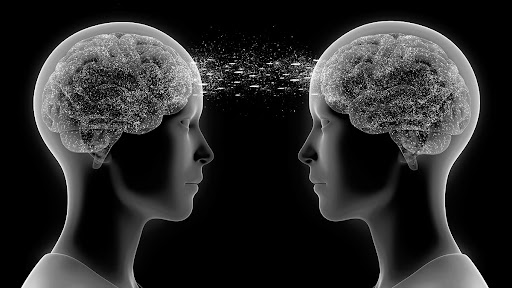
The history of free association in therapy can be traced back to the early 1900s when Sigmund Freud and his colleagues used it as a way to help people explore their thoughts and feelings. Freud believed that free association was the key to understanding the unconscious mind, and he used it extensively in his work with patients.
- After the 1990s, the popularity of free association decreased because many therapists believed it was too difficult to guide people through this exercise in a way that could provide any real benefits. However, more recent research has highlighted some of its uses and therapeutic potential.
- The birth of the concept behind free association dates back to Sigmund Freud’s early work with patients during his time at Vienna University Hospital between 1881-1886 – he would ask them to say whatever came into their mind when prompted by him/his colleagues (e.g., “What are you thinking about?” or “How does this make you feel?”). This technique eventually became known as “free association”
- In the 1990s, Free Association lost momentum because many therapists believed that it was hard to guide people in a way that yielded any useful information.
- However, recent research has shown Free Association to have some potential therapeutic benefits – primarily for exploring thoughts and feelings on a subconscious level.
- Therapists who use free association may ask their clients about images and scenes from dreams, as well as how they feel during the dream and what it might represent in their lives. This activity can help therapists gain insight into their clients’ subconscious thoughts, motivations, and emotions.
- Free association is also used in group therapy exercises such as brainstorming sticky notes with words related to different topics (e.g., relationships, school) then sticking them around the room next to objects or other people who represent those ideas/concepts in some way. You can interact with these items and explain why they’re connected while talking about what’s going on in your life.
- Today, free association is still considered an important therapeutic tool by many therapists. It’s often used in art therapy, group therapy, and dream analysis, among other settings.
Free Association Exercises in Therapies

There are many different types of free association exercises that therapists may use with clients. The main thing is for you and your therapist to find an activity or exercise that works well with both your personalities, needs, preferences, etc.
Free Association Chain
This exercise involves making a list of words or phrases related to a certain topic, then brainstorming as many associations as possible for each one. This exercise is a good way to counteract a lack of creativity because it helps people tap into their inner stream of consciousness.
Free Association Drawing
Drawing is an excellent form of free association for some people. This exercise involves making a list or chain of words related to a topic and then drawing what comes to mind as you think about each one. Again, this works well with those who have trouble coming up with creative ideas on the spot but want to move past that problem by tapping into another type of thinking process (i.e., visual).
Crayon Assignments
You can do this activity alone or in groups. However, not everyone may feel comfortable enough sharing these drawings later! In crayon assignments, participants draw whatever comes to mind in response to a prompt or topic. The key is to not censor yourself and just let your hand move across the paper without thinking too much about what you’re drawing.
Talk About Your Dreams
One way for therapists to get an idea of your subconscious thoughts is by talking about your dreams. This can be done during free association, or it can be its own exercise altogether. In either case, your therapist will ask you questions about some of the more memorable images or scenes from your dreams. This can help them gain insight into some of the underlying issues that may be affecting you on a subconscious level.
Group Therapy Exercises
Some group therapy sessions incorporate free association exercises as well. One example would be brainstorming sticky notes with words related to different topics (e.g., relationships, school) then sticking them around the room next to objects or other people who represent those ideas/concepts in some way. You can interact with these items and explain why they’re connected while talking about what’s going on in your life.
Word Association Game
Similar to the game you probably played in elementary school, this exercise asks clients to say the first thing that comes to mind when they hear a particular word. The therapist can use this information to get a better idea of what might be causing some of your issues.
Dream Analysis
In addition to asking questions about images and scenes from dreams, therapists who use dream analysis may also ask their clients about their feelings during the dream and what it might represent in their lives. This activity can help therapists gain insight into their clients’ subconscious thoughts, motivations, and emotions.
Why Do Therapists Use Free Association In Therapies?
Therapists use free association in therapies for a few reasons:
To Explore Thoughts And Feelings
 This therapy tool primarily helps to explore a person’s thoughts and feelings on a subconscious level. Therapists most commonly use this in art therapy, group therapies, dream analysis, etc. For e.g. brainstorming sticky notes with words that relate to different topics
This therapy tool primarily helps to explore a person’s thoughts and feelings on a subconscious level. Therapists most commonly use this in art therapy, group therapies, dream analysis, etc. For e.g. brainstorming sticky notes with words that relate to different topics
To Connect With Clients On Deeper Level
 Free association can also help therapists gain insight into their clients’ subconscious thoughts, motivations, and emotions. These may be difficult to discuss otherwise. It is especially if they’re uncomfortable talking about certain subjects or don’t feel like it would do any good. This activity is typically more beneficial when done one-on-one rather than in a large group setting. It is where everyone shares the same experience at once. This makes it harder for someone who’s struggling with something.
Free association can also help therapists gain insight into their clients’ subconscious thoughts, motivations, and emotions. These may be difficult to discuss otherwise. It is especially if they’re uncomfortable talking about certain subjects or don’t feel like it would do any good. This activity is typically more beneficial when done one-on-one rather than in a large group setting. It is where everyone shares the same experience at once. This makes it harder for someone who’s struggling with something.
To Gain Insight Into Unconscious Mind
 Free association was the key to understanding the unconscious mind. More recent research also supports this. This therapeutic tool can help therapists explore the hidden meanings behind their clients’ words and actions.
Free association was the key to understanding the unconscious mind. More recent research also supports this. This therapeutic tool can help therapists explore the hidden meanings behind their clients’ words and actions.
To Stimulate Creativity
 Free association can also help to stimulate creativity. It allows people to explore different thoughts and ideas without judgment or restriction. This type of brainstorming can lead to new insights, solutions, and inventions. It also allows people to access memories, thoughts, and feelings that they may not have been aware of before.
Free association can also help to stimulate creativity. It allows people to explore different thoughts and ideas without judgment or restriction. This type of brainstorming can lead to new insights, solutions, and inventions. It also allows people to access memories, thoughts, and feelings that they may not have been aware of before.
To Explore Dreams
 Free association sometimes helps in dream analysis sessions. This is to help people better understand their dreams. They can do this by exploring the images, scenes, and words that come up during sleep. Therapists may ask questions like: “What are you thinking about?” or “How do you feel right now? What does this scene mean for you?”. This activity can provide valuable insight into a person’s subconscious mind and emotions they don’t typically acknowledge while awake.
Free association sometimes helps in dream analysis sessions. This is to help people better understand their dreams. They can do this by exploring the images, scenes, and words that come up during sleep. Therapists may ask questions like: “What are you thinking about?” or “How do you feel right now? What does this scene mean for you?”. This activity can provide valuable insight into a person’s subconscious mind and emotions they don’t typically acknowledge while awake.
Negative Impacts of Free Association

Although the free association has some potential therapeutic benefits, it’s not without its drawbacks. Here are a few things to keep in mind:
Can Be Hard To Guide People In A Useful Way
Many therapists believe that free association is hard to guide people in a way that yields any useful information. This is because people can go off on tangents and talk about irrelevant topics. This makes it difficult for the therapist to steer the conversation in a helpful direction.
Can Cause Feelings Of Unconscious Guilt And Anxiety
Free association can also cause feelings of unconscious guilt and anxiety. if someone talks about something they’re ashamed of or don’t want to deal with. This often happens when someone brings up memories or thoughts from their past without realizing it.
Can Be Difficult To Set Boundaries
Free association can also be difficult to set boundaries with. This is because people may sometimes go beyond what is appropriate or acceptable. For e.g. bringing up certain sexual topics that the doesn’t want to discuss. If this happens during a therapy session and you don’t feel comfortable discussing those kinds of things, let your therapist know right away so they’re aware of what happened.
Can Lead To Increased Anxiety
Talking about one’s memories, thoughts, and feelings can be difficult for some people. It is especially if they’re struggling with depression or anxiety. They do not recommend this therapy tool for anyone who may have a fear of discussing these things out loud. For e.g. someone who has panic attacks caused by the idea of talking. The free association may also worsen symptoms in those affected by post-traumatic stress disorder. This is because it puts them in touch with painful memories. These are best if you leave them alone.
Conclusion
In conclusion, free association can be a useful therapeutic tool. This is for exploring the subconscious mind, stimulating creativity. It also helps in gaining insight into one’s thoughts and feelings. However, not everyone should use this. They should do this with caution due to its potential drawbacks. If you’re considering using free association in therapy, please speak to your therapist beforehand to see if it’s right for you.
For more information, please contact MantraCare. Online therapists are increasingly important in today’s world because they provide a convenient and accessible way for people to receive mental health support and treatment. Visit MantraCare If you are searching for “therapist near me”. Book a trial Online therapy session
